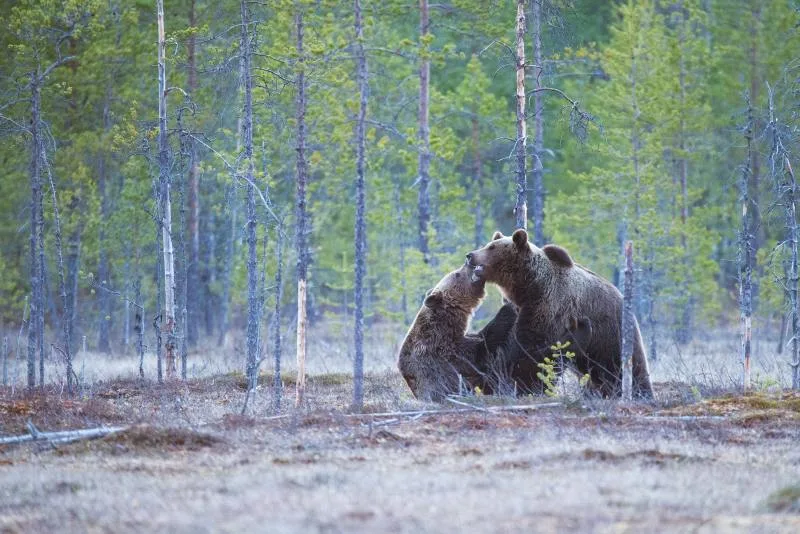
Grizzly bears 'thriving' in Alberta, science-based estimates show
Efforts to help the Alberta grizzly bear population recover are working and the province now has between 856 and 973 grizzlies, according to Alberta Environment and Parks.
In 2010, the year grizzlies were listed as a threatened species in Alberta, the provincial population estimate was between 700 and 800.
In a news release [on March 31], Environment and Parks said two recent population surveys have found the grizzly population has doubled in the foothills area east of Banff National Park.
Another survey, in a large area of boreal forest between Whitecourt and Lesser Slave Lake, found about 62 grizzlies, the news release said.
Environment and Parks Minister Jason Nixon said the province commissioned a DNA study in 2019 to get an accurate picture of the grizzly bear population.
SEE ALSO: Unusual amount of grizzly bear sightings on Vancouver Island
"The study confirms what many have observed; the grizzly bear population is thriving in Alberta," Nixon said in a video posted to Twitter.
"Today, Alberta has science-based population estimates for all of our provincial bear management units. With clear data on grizzly bear populations in our province, we can update our grizzly bear recovery plan with evidence-based approaches."
Gord Stenhouse with fRi Research was the project lead for the 2019 study. The research scientist said food supply was key as adult females need about 20 per cent body fat when they go into the den in the fall in order to produce cubs.
"We think that a change in food supply, an increase in food supply, has occurred during the period of population increase," he said.
WATCH BELOW: HOW TO STAY 'BEAR AWARE' WHILE CAMPING
RELATED: Bear cub with unique white head spotted in Alberta
Stenhouse credits forest management and younger forests for the change.
"You open up the canopy which allows more light to come in, which produces more food and berries on the ground for bears," he said.
"At the same time with younger forests, you get a response with the ungulate population so white-tail deer and moose increase — and of course white-tail deer and moose are food for bears."
Nicholas Scapillati, executive director of the Grizzly Bear Foundation, a group that works to conserve the species, said the increasing number brings a lot of hope for grizzlies in Alberta.
"We're very excited that the government has led with such a detailed and thorough scientific assessment," he said.
However, he disagrees with Nixon that the population is "thriving."
"I think we need to temper our optimism," Scapillati said. "Other than muskox, grizzly bears are the slowest-reproducing land mammal in North America."
Scapillati is concerned the growing population could lead to calls from trophy hunters to allow grizzlies to be hunted again, something that has been illegal in Alberta since 2006.
"Ending the hunt was the biggest decision that the government made in Alberta to protect grizzly bears," he said. "The moment that they start to show signs of recovery, why would you start hunting them again?"
There is no indication from the province that it will allow grizzly bear hunting to resume at this time. Nixon said with the new information from the study, the province can update its grizzly bear recovery plan and will consult with Albertans in the coming months.
This article was originally published for CBC News
Thumbnail courtesy: UNSPLASH/Vincent van Zalinge